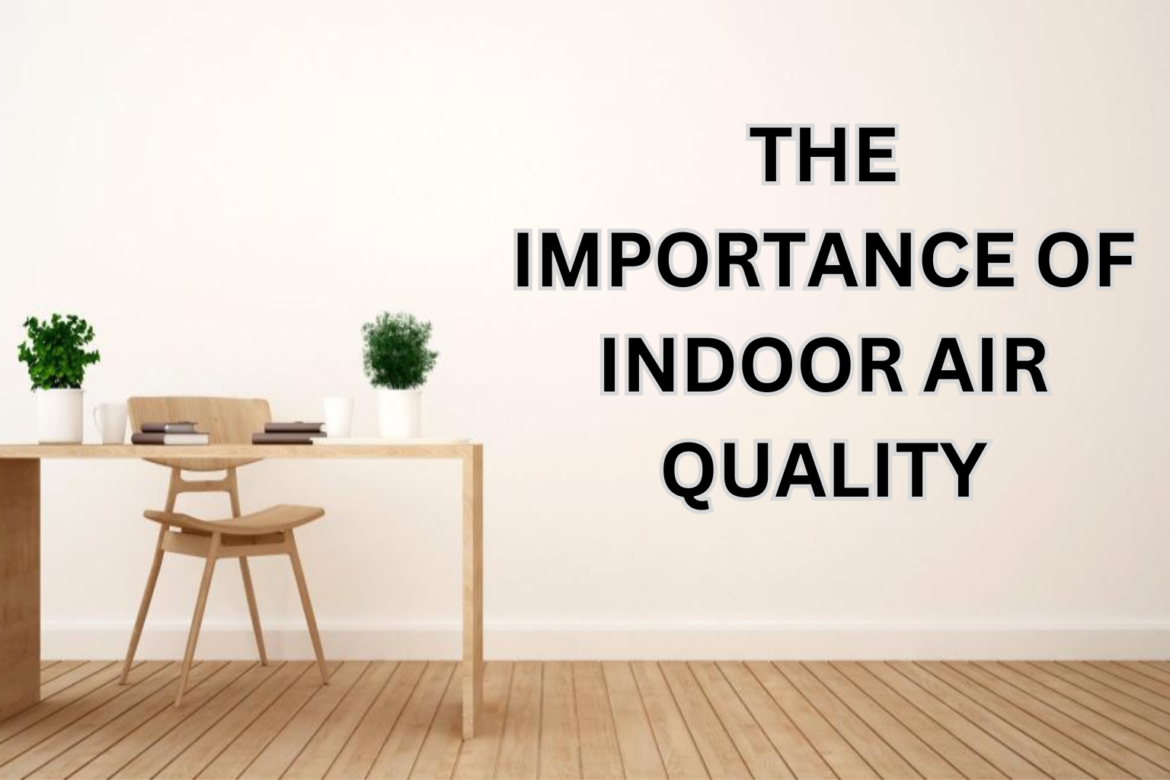Indoor air quality plays a crucial role in our overall well-being it often overlooked we spend a significant portion of our lives indoors at home at work or in school poor indoor air quality can have a negative impact on our health leading to respiratory issues, allergies and even long-term conditions like asthma or heart disease the air inside our homes can be more polluted than the air outside thanks to dust chemicals from cleaning products pet dander and even mold growth these pollutants can silently affect our health without us even realizing it.
Improving indoor air quality is not only essential for our physical health but also for our mental and emotional well-being clean air helps us feel more energized focused and productive it can also reduce symptoms like headaches and fatigue contributing to better sleep quality and overall comfort with simple steps like improving ventilation using air purifiers and choosing natural cleaning products we can create a healthier living environment for ourselves and our families understanding the importance of indoor air quality is the first step towards living a healthier more comfortable life in the spaces we spend the most time.
Health Effects of Poor Indoor Air Quality:
Poor indoor air quality can have a range of negative effects on our health some of which may not be immediately noticeable but can worsen over time when the air inside our homes is contaminated with pollutants like dust, mold, pet dander chemicals and volatile organic compounds (VOC) from cleaning products or furniture it can lead to a variety of health problems for starters it can trigger respiratory issues such as coughing wheezing and shortness of breath people with asthma or allergies are especially vulnerable and the symptoms can be aggravated by poor air quality making it harder to breathe or concentrate.
The lack of proper ventilation can trap these harmful particles indoors allowing them to accumulate over time and increase the risk of chronic conditions like asthma, bronchitis or even heart disease poor indoor air quality can negatively impact our mental health studies show that exposure to pollutants can affect cognitive function causing difficulty concentrating and feeling mentally drained it clear that maintaining good air quality indoors is essential for both physical and mental well-being taking steps to improve air circulation eliminate sources of pollution and invest in air purifiers can make a significant difference in our overall health.
Benefits of Good Indoor Air Quality:
Good indoor air quality (IAQ) plays a crucial role in maintaining our health and well-being especially since we spend a significant amount of time indoors clean, fresh air helps reduce the risk of respiratory issues such as asthma and allergies by minimizing the presence of harmful pollutants like dust, mold and pet dander it also lowers the chance of headaches, dizziness and fatigue which are often linked to poor air quality in a well-ventilated space the air remains free of excessive humidity and airborne toxins creating a more comfortable environment air quality is optimal.
It boosts concentration and productivity making it easier to focus on tasks good IAQ improves sleep quality by promoting a balanced level of oxygen and reducing irritants that might disturb rest maintaining healthy indoor air also supports long-term health lowering the risk of chronic conditions like heart disease and lung infections in essence the benefits of good indoor air quality extend far beyond comfort contributing to a healthier more vibrant life.
Strategies for Improving Indoor Air Quality:
Improving indoor air quality is essential for maintaining a healthy living environment and there are several simple strategies you can use to make your indoor air cleaner and fresher one of the most effective ways is to increase ventilation by opening windows and doors possible allowing fresh air to circulate and push out stale air using exhaust fans in the kitchen and bathroom helps to remove excess moisture and prevent mold growth another important step is to keep your home clean as dust pet dander and allergens can accumulate quickly.
It also beneficial to use air purifiers especially in rooms where you spend the most time as they can filter out harmful particles and pollutants adding houseplants can also be a natural way to improve air quality as certain plants are known to absorb toxins and release oxygen avoid smoking indoors and be mindful of the cleaning products you use opting for non-toxic or eco-friendly alternatives that do not release harmful fumes controlling humidity levels by using dehumidifiers or humidifiers can help prevent the growth of mold and mildew which thrive in damp environments.
Indoor Air Quality Standards and Guidelines:
Indoor air quality (IAQ) standards and guidelines are essential to ensure that the air we breathe inside our homes, schools and workplaces is safe and healthy various organizations including the World Health Organization (WHO) and the Environmental Protection Agency (EPA) have established guidelines that recommend acceptable levels of common indoor pollutants like carbon dioxide, volatile organic compounds (VOC) particulate matter and carbon monoxide these standards help to limit the presence of harmful substances that can lead to respiratory problems, allergies, and other health issues the EPA advises that indoor carbon dioxide levels should not exceed 1,000 parts per million (ppm) as higher concentrations can cause discomfort and reduced productivity.
The WHO sets limits on pollutants like particulate matter (PM2.5) and formaldehyde which are linked to long-term health risks such as asthma and cancer to pollutant levels IAQ guidelines also emphasize the importance of ventilation to ensure that the air is constantly refreshed proper airflow can help dilute and remove indoor air pollutants reducing their harmful effects following these standards and guidelines can significantly improve the overall air quality in a space creating a healthier environment for everyone it important to note that maintaining good IAQ involves regular monitoring proper maintenance of ventilation systems and minimizing the sources of indoor pollution.
